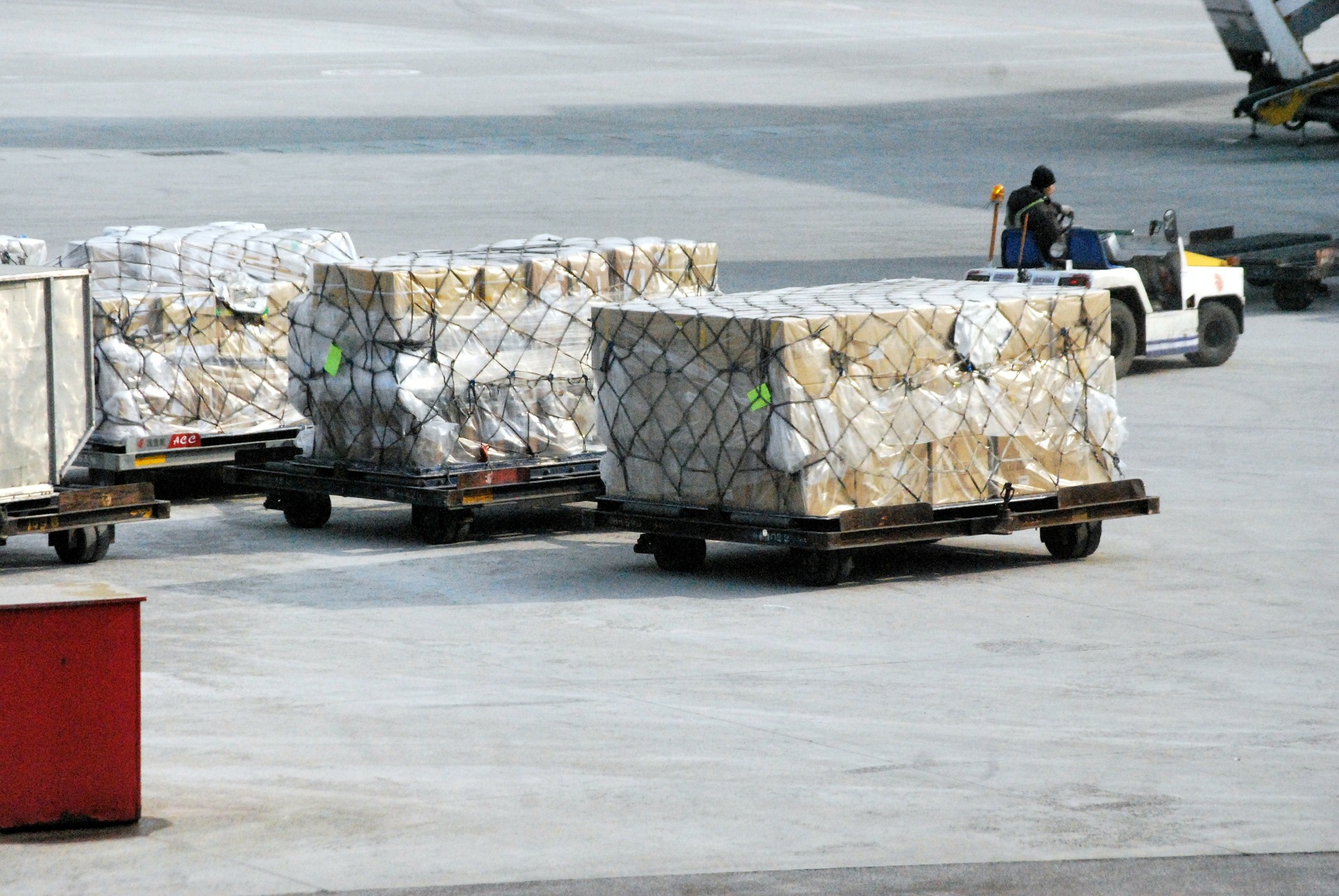When it comes to shipping in global markets, packaging your products for export is not to be neglected as it enables the products to arrive in the market and to the final consumer intact and undamaged. International shipping commands a huge demand for exporters when packaging goods to export overseas.
There are over four variables that come to play when packaging to export overseas which are; time, breakage, moisture, pilferage, and excess weight, and all these variables are considered alongside the method of shipping or transportation. However, the export packaging materials play a vital role in ensuring the major objective of packing, which is for the products to arrive safe and secure at the final destination.
Even though products are produced or engineered to withstand certain things like vibrations, stacking pressure, climatic conditions, moisture, bends, and compression, and also from falling, it is important for manufacturers to ensure quality is not compromised during transit. For this to be attained there is a wide range of packaging options for the various shipping methods which can be researched and utilized.
Export packaging is actually the third layer of packaging as products go through a series of extra packaging to ensure the products get to the final consumer overseas undamaged.
When packaging products, we have the sales packaging, the outer packaging, and the transport packaging which is another name for export packaging.
Sales Packaging
The sales packaging is normally the first packaging or the immediate layer of packing around the goods. The final consumer normally receives the products in these packaging. It remains until the goods get to the final end-user. Products are normally rejected if they get to the final consumer with the sales packaging damaged. An example of a sales packaging can be the bottle an olive oil is contained, or the sealed plastic of a biscuit or boxes electronics are sold in.
The reason this packaging is called sales packaging is because it is also used as a means of marketing as it contains the brand information and images. Important information about the product is also placed on this packaging including specifications and expiry dates. As this packaging serves for purposes of marketing, designing is also crucial.
The Outer Packaging
The outer packaging of a product is the packaging that gets to retailers or distributors of the product. It is the middle layer of a product’s packaging. It normally contains multiple sales packages. It is also used for promotional display of the product for retail purposes. The outer packaging is mostly used as a semi-layer of “reinforced” protection of the products and also as a means to pack multiple products for wholesale marketing. It is also important as it limits packaging costs for certain products as products can be packed in multiples rather than individual products.
A good example of the outer packaging is a case that may contain 24 cans of beverages. They are mostly placed on a shop shelf as products are retailed and on retail display fixtures. This packaging is also used for purposes of marketing and branding.
Transport packaging (Export packaging)
The transport packaging is the third layer or the outermost layer of a product’s packaging. The sole purpose of this packaging is to protect the products as they are being transported overseas and to the end-users. During export transits, products are susceptible to damages due to climatic or atmospheric conditions (moisture) and also accidents that may occur. The transport packaging is designed to protect the products from such damages or accidents.
A good example of transport packaging may include crates, or boxes palletized and well-sealed and wrapped with shrink plastics. Since exporting a product overseas may take time or go through certain conditions, the product quality must not be compromised.
The process of packing and packaging products for export greatly depends on the product itself and the method of transportation. Specific products will require specific packaging and a specific mode of transportation to maintain quality.
The Various Methods of Transportation and their effect on packing and packaging
There are several methods of transportation and with each method, there are unique design packaging and other factors to consider. These methods of transportation may include;
Air Cargo or Freight
Shipping by air is ideal for products that need to be delivered on a short lead time or contract basis. It is best used for perishable goods with a short shelf life. Such products can be packed in ventilated crates to prevent spoilage. With air transportation, time is of importance.
Air-freight can be an easy way to transport products from one place to another but the downside is, it can be expensive, and the heavier the package the more expensive it becomes to ship by air. Normally, less heavy packing is required but there is the need for adequate protection if the products are highly pilferable.
Standard domestic packing with air cargo can be acceptable if the product is durable with no necessary display packaging. However, a good quality cardboard of about 250 lbs per square inch or better still, tri-wall construction boxes can be adequate for the packing of air shipments.
With recent developments and for the fact that transportation costs are derived by weight and volume, light and reinforced packing materials are now available for export. It has been realized that properly packing products to minimize volume and weight and also reinforcing them can save money. For businesses that are not highly experienced and equipped to ensure appropriate packing, can hire a professional firm to handle the packing.
Shipping by Sea (Ocean freight)
Shipping by sea is the most common method of transporting products and highly used to ship large and bulky goods with a flexible lead time or term of contract. Shipping by sea may take more time compared to the other methods of transportation but it comes with a way lower price tag and can easily transport large volumes or bulk shipments and between very long distances.
Generally, the cargo for sea shipment is loaded in containers but in some cases, the product or cargo are shipped in break-bulk cargo. Container loading is an ideal way to protect the cargo from other obstacles and within the container, the cargo is parked on crates and well fitted to avoid stacking pressure and damages. The products can also be placed in cartons for more protection.
Experienced buyers are familiar with port systems and overseas shipping and will oftentimes require a specific packing system. This is to ensure they can receive their purchased products in good conditions. The products may be packed in strong containers, adequately sealed with proper bracing in the container no matter the size. It is important to make sure the weight is evenly distributed and palletized.
Above all and with major concerns, the packages and packing materials should be made of moisture-resistant materials. To further safeguard the cargo, straps, seals, and shrink wrapping materials can be used. And it is also important to always pay attention to any product-specific hazardous materials packing requirements. A final tip, to avoid pilferage, do not write brand names or contents on packages.
For standard packaging with normal size and shapes, containers can be obtained from private leasing companies that can accommodate most cargo. They can also provide refrigerated containers and flexi tanks for bulk liquid shipments. Shipments by ocean freight can really depend on the products and their shipping requirements.
When it comes to break-bulk shipments by ocean freight, cargo are loaded directly in the vessel in a net, conveyor, and also in a chute. This can lead to added pressure on the package and during transit, the products may be stacked on each other and can easily be moved and fall on other goods. And with less sophisticated handling facilities overseas, the cargo may be rough handled. Products that are usually shipped through this method are grains, and seeds.
A major concern with shipping by sea is moisture which may develop during the voyage even if the ship is well furnished with a dehumidifier and air conditioning. Also, the cargo can also be unloaded in a foreign port with no covered storage facilities which makes theft and pilferage a major concern.
Rail Freight
Transportation by train is another affordable option for shipments between regions or inland. Rail transportation can be fast and used for fast large volume shipments. With transportation by train for export, destinations can be limited especially for transcontinental shipments. Even though we are experiencing high-speed continental trains being developed, transportation can be limited to only specific locations along the rail lines.
Road Freight
Transportation by road is very common and vital to moving shipments to points and locations ships, planes and trains can’t access. For products to be moved from seaports and airports to their final destination, road transportation is the common way to go.
Road freighting is ideal for short distances, provides fast delivery and also cost effective. Shipments can be easily monitored and for land-locked nations, cargo shipments can only make it to the final destinations by road.
Necessary Requirements for Export Packaging
Exporting products overseas comes with specific packaging requirements which will not only ensure the products arrive at the final destination undamaged but also makes sure the products are well documented to avoid the products from being delayed or detained. The most significant components of shipping a package overseas are packaging containers, labeling, and documentation. Even when shipments are made in bulk, or in large containers, they must be properly labeled and documented.
Carton Packaging
Cartons are usually used for proper packaging which helps to make sure the products get to the intended destination in all good conditions. When choosing a packaging option for export transportation, moisture, perforation, breakage, and weight are the four important elements to consider. Good quality and enforced cartons can provide a means to keep the shipped items undamaged during transit.
Exporters can decide to use heavy-duty bags, crates, barrels, or even corrugated boxes, what matters is if the material is good enough to protect the items from being damaged. The material needs to be puncture-proof, moisture-resistant, and durable.
Labeling
It is a mandatory regulation for packages to be labeled properly including shipping containers. This form of labeling is different from the sales packaging label which goes directly on the product. This implies the transport packaging labels which are used to ensure the package is handled properly.
With proper labeling, the value of the shipment is protected, and every safety requirement needed in handling the package during transit is apparent. It makes sure sensitive information is indicated on the package.
The importer or buyer can also provide any specific requirements for the labeling in markets with specific and mandatory labeling requirements. This may be an indication of the country of origin, shipper’s mark, the dimension and weight of the package. Buyers may also request symbolic representation for handling and cautionary indications like how the box should be placed.
Bulk Container Loading
Products can also be shipped in 20’ or 40’ containers in large quantities and together with unpackaged materials. With this form of packing, less protection is required as the products are being protected by the large re-enforced steel container. Seeds and grains are normally packed in containers this way using 50 kg bags or more and are protected and handled properly.
Bulk packing of mass quantity of products also comes with an advantage as they easily pass through customs control much quicker as customs and other regulatory bodies can easily check one set of labeling and documentation.
Documentation
The paperwork for exporting products overseas is the most vital when it comes to transport packaging. Exporting products overseas requires proper documentation because it is with the required documentation, authorities use to validate the product’s entry across borders. Without proper documentation, even with the products in sight, authorities can reject and seize the products. Any package that is shipped either by air, land, or sea requires an airway bill (for air transport) or bill of lading which is used to stipulate the shipping terms between the shipper and the carrier.
Other required documents may include a commercial invoice, a packing list and certificate of origin, insurance certificate and a declaration of products’ value. Other countries may require additional paper work like export license, inspection certificate from agents like SGS, phytosanitory certificate, EUR 1, etc. It is very important to check the required paper work for any country before shipping to that country.
Endnote
Export packaging should not only consider the method of transportation being used and the type of product. It is very important to check and consider the required packaging for the market you are exporting to. Certain markets may require certain compliance in the packaging and labeling of products. Ensure to meet the required standards so the products may not be rejected even when they arrive in all good condition.




